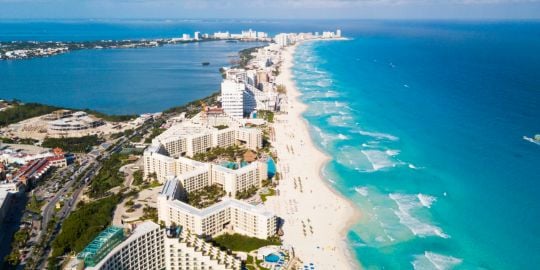So far, so good. I haven't had one.
Every time I go to an ATM lately, my dollars are worth fewer pesos. Getting toward the end of the month, the balance may be getting low and I need some cash. I do a balance inquiry and it shows a balance of 3435 pesos. My bank charges only a 1% foreign transaction fee and no foreign ATM fee at BBVA Bancomer. Figure I can take 99% of 3435 or 3400.65. It would make sense to take out only 3300 and leave 100.65 in the account since 100 pesos is the smallest note the ATM dispenses. But suppose I do take 3400 without thinking, is 65 centavos ($0.11) enough to prevent an overdraft?
I realize this is probably the least of my worries, but it just happened to cross my mind at the moment.
US Checking Account Overdraft Possibility?
In the US, your overdraft has to be more than $20 to be charged.
That was the banking regulations enacted under Obama. I don't think Trump has reversed that yet.
Jasmine1955 wrote:In the US, your overdraft has to be more than $20 to be charged.
That was the banking regulations enacted under Obama. I don't think Trump has reversed that yet.
No worry then, thanks
New rule on overdraft fees
Thursday, July 01, 2010
New federal rules give you the choice to avoid overdraft fees on certain debit card transactions and ATM withdrawals by stopping banks from approving these transactions when you do not have enough money in your bank account.
If you do not have sufficient funds in your account to cover a payment, it is called an overdraft. Many banks will pay the overdraft and charge you a fee. This is called “courtesy overdraft coverage.”
As of July 1 (new accounts) and Aug. 15 (existing accounts), your bank must have your permission before it can charge a fee to cover an overdraft if you do not have enough money in your account to pay for the transaction. Giving your bank permission to pay overdrafts on debit card transactions and ATM withdrawals is called “opting in.”
If you do not opt in, and you do not have enough money in your bank account, these transactions will be denied.
Some banks also charge a second overdraft fee if the overdraft and the fee are not paid back in a few days. And at your next deposit, the banks automatically help themselves to the money you owe.
Consumer Action urges consumers not to opt in and not to be confused by notices from their banks. “Banks may try to get you to opt in to expensive overdrafts by using scare tactics, such as stating that your debit transactions and ATM withdrawals will be denied if you don't have money in the bank,” said Linda Sherry of Consumer Action. “Well, hello! If you don't have money in the bank, why would you want your bank to advance you money and then charge you $35 for each transaction it denied?”
Sherry points out there are much better alternatives for dealing with overdraft. “If you frequently fall short between paychecks, consider REAL overdraft protection.”
Unlike the “courtesy coverage” that banks offer—and want you to opt into—there are real alternatives out there. Most banks offer better, cheaper options in case you overdraw your account. For a small fee or small amount of interest, traditional bank overdraft protection plans mean that you don't have to pay the large overdraft fees. Talk to your bank or credit union branch to find the options available to you, which may include linking your checking account with:
A savings account
A credit card
A line of credit
Each day that you need a transfer to cover overdrafts, the bank will automatically transfer money to your account. You may pay a $5 to $10 fee to cover the transfer—but you will not be hit with hefty overdraft fees. If you link your account to a credit card or a line of credit, you will be charged some interest for the transfer, until you pay it back.
New overdraft rules
The new overdraft rules were written by the Federal Reserve. The rules:
Prohibit financial institutions from charging consumers fees for paying overdrafts on automated teller machine (ATM) and one-time debit card transactions, unless a consumer consents, or opts in, to the overdraft service for those types of transactions.
Allow banks to charge overdraft fees for checks or recurring debits when there are insufficient funds in the consumer's bank account—even without a consumer's opt in. In other words, you can still be charged per-item fees for “non sufficient funds” (NSF) checks or automatic bill payments. On average these fees are $35 each, and multiple fees can be charged each day depending on how many transactions apply to a negative balance. This is because the Federal Reserve's testing showed that most consumers want overdraft services to cover important or recurring bills (such as checks to pay rent, utilities, and telephone bills), and that they are willing to pay fees for this coverage.
Require that consumers must be provided a notice that explains the financial institution's overdraft services, including all fees, and the consumer's choices, before being given the choice to opt in.
Give you the right to opt out at any time—even if you already have opted in.
Require that you get same account terms, conditions and features, including price, as other account holders, even if you do not opt in. In other words, you cannot be discriminated against if you don't opt in.
Are issued under Regulation E, which implements the Electronic Funds Transfer Act.
Prohibit financial institutions from associating the payment of overdrafts for checks and other transactions to whether the consumer opts into overdraft service.









